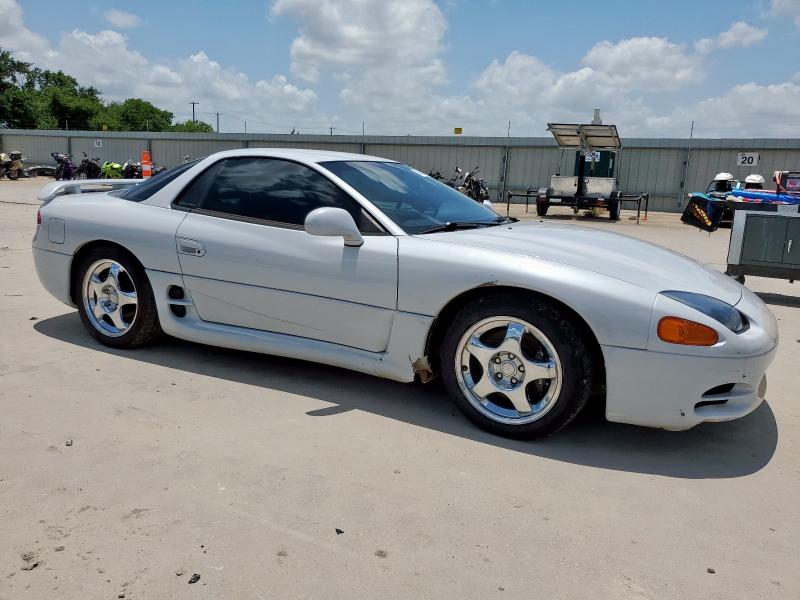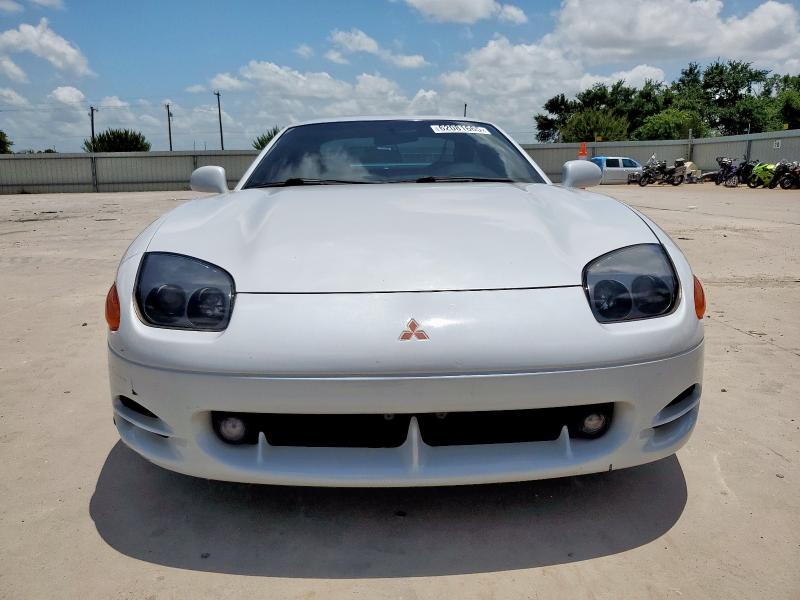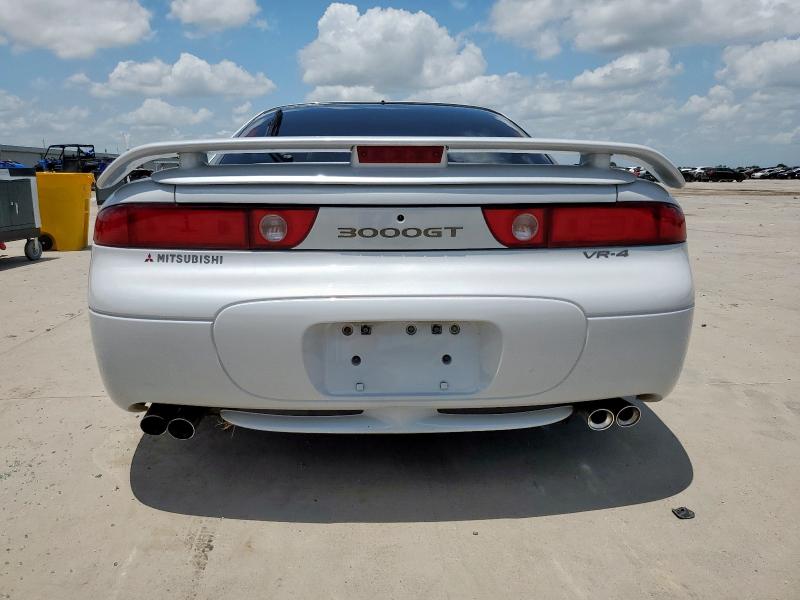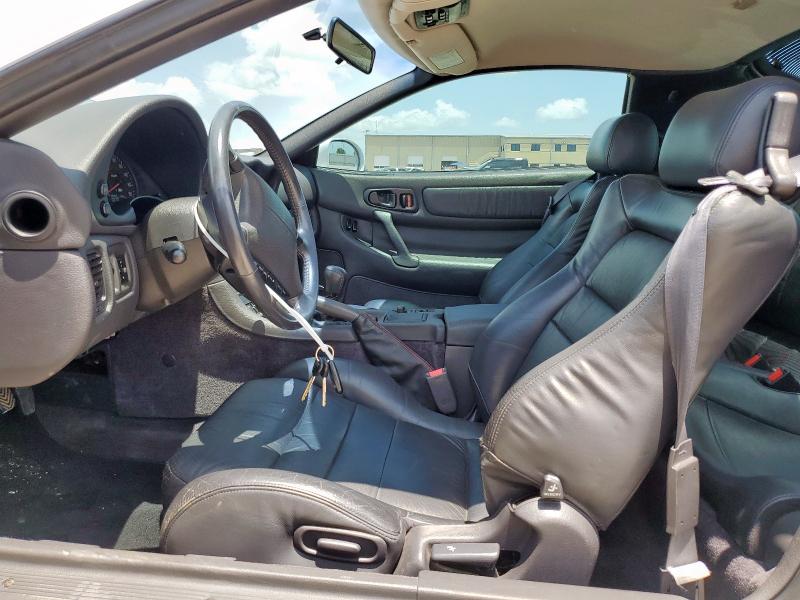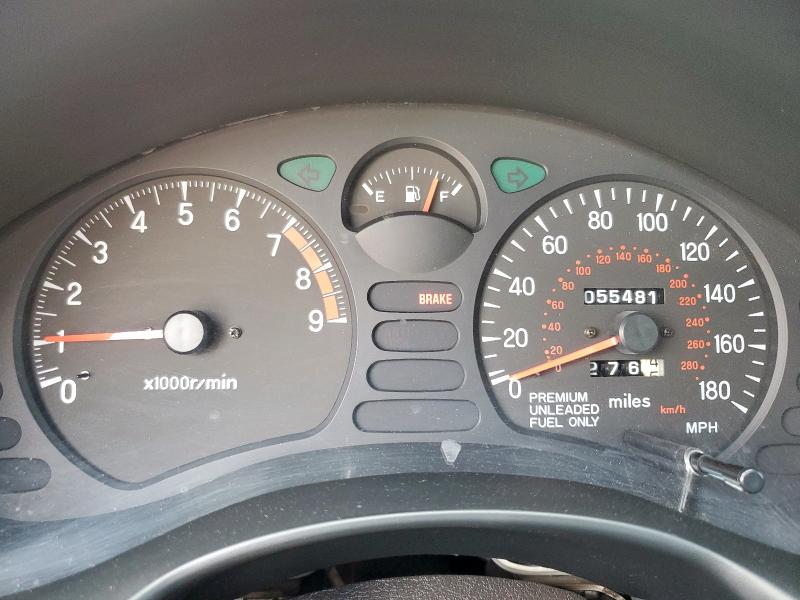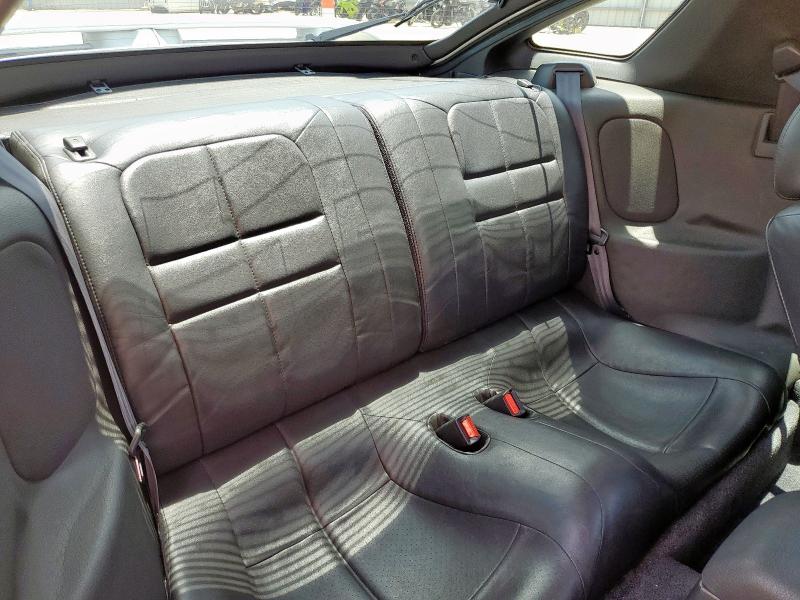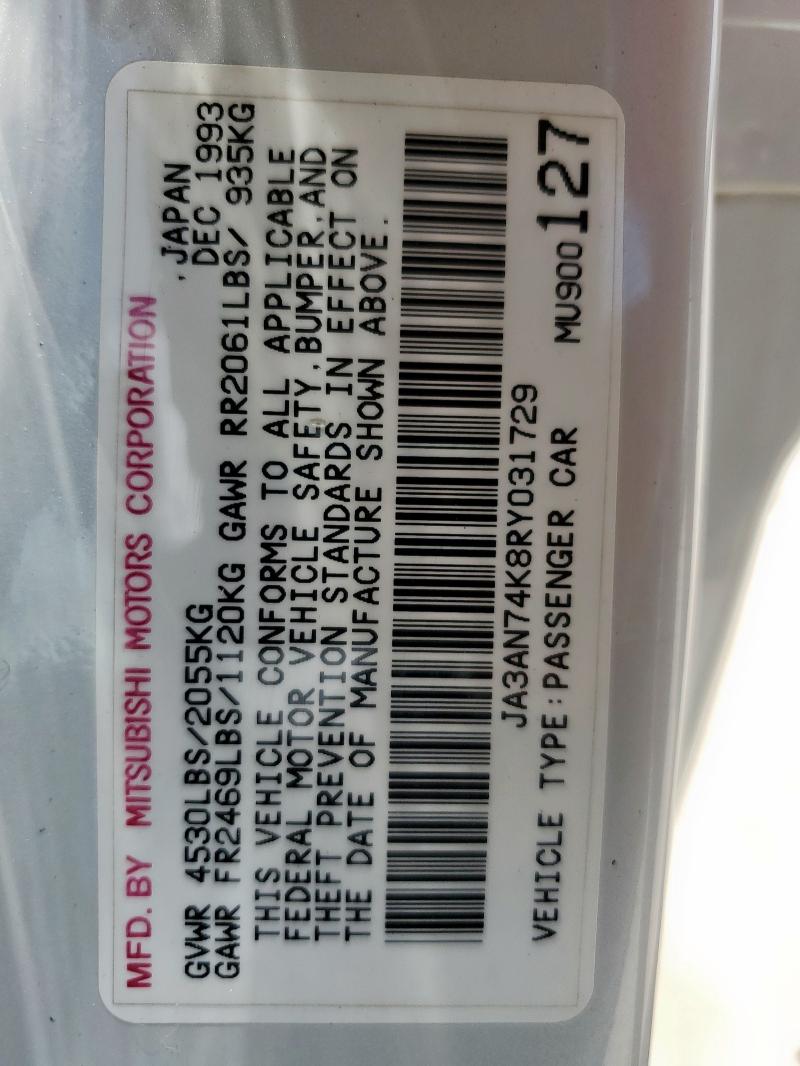1994 MITSUBISHI 3000GT | JA3AN74K8RY031729
 ❯
❯Lot details
- Sale Date2025-06-23
- Lot Number62081665
- ACV29919 $
- Sale documentAL - CERT OF TITLE-SALVAGE TITLE (P)
- LocationTX - DALLAS SOUTH
- Odometer55,481 miles (89,288 km)
- Primary DamageSIDE
- Secondary DamageFRONT END
Vehicle details
- Make
- Model
- Year1994
- FuelGAS
- Engine3.0L 6
- TransmissionsMANUAL
- Drive TypeAll wheel drive
Vehicle specifications
4
~$45,000
Engine: 3.0L twin‑turbocharged V6 DOHC 24V
Torque: 427 Nm
0–100 km/h: ~5.3 s
In VR‑4 trim, the 3000GT was Mitsubishi’s technological flagship and a true Japanese super‑GT contender of the ’90s. Its twin‑turbo 3.0‑liter V6 produced 320 hp and a robust 427 Nm of torque, delivering relentless acceleration and a broad powerband. The car’s AWD system put this power to the ground with minimal drama, allowing sub‑5.5‑second 0–100 km/h sprints in an era when many sports cars were still rear‑drive only.
But the VR‑4’s performance story wasn’t just straight‑line speed — it was a rolling showcase of active technology. Active aerodynamics adjusted the front and rear spoilers at speed, electronically controlled suspension adapted damping in real time, and four‑wheel steering improved agility in tight corners. This complexity made the 3000GT feel remarkably stable at high speed while still nimble on winding roads.
Character‑wise, the 3000GT was a Japanese interpretation of a European grand tourer: powerful, high‑tech, and comfortable enough for long journeys, yet capable of challenging contemporary Porsche, Corvette, and Skyline GT‑R owners in spirited driving. It wasn’t the lightest or rawest car in its class, but it offered a unique blend of brute force, innovation, and refinement.
Final Bid Mitsubishi 3000GT (1994)
$14,200
$14,200
$14,200
Body Styles
The Mitsubishi 3000GT was a two‑door, four‑seat (2+2) grand touring coupe with a low, wide stance and muscular proportions. The long, sharply sloped hood flowed into a steeply raked windshield, leading to a compact greenhouse and broad rear haunches. Pop‑up headlights (pre‑facelift) or fixed projector units (post‑facelift) defined the car’s face, complemented by integrated fog lamps and aggressive front bumper designs. The rear featured a large glass hatch for practicality, with the VR‑4 models distinguished by a prominent adjustable rear wing. Every angle of the 3000GT projected power and presence, making it one of the most visually imposing Japanese sports coupes of its era.
Model Name Meaning (Manufacturer)
The name “3000GT” combines engine displacement — 3.0 liters — with “GT,” shorthand for “Gran Turismo,” a European term signifying a grand touring car built for both performance and comfort. In Japan, the car was sold as the Mitsubishi GTO, referencing the famous Ferrari 250 GTO and meant to evoke prestige and motorsport heritage.
Body & Interior Colors and Rims
The 3000GT offered a rich selection of colors, from pure performance tones like Passion Red and Pyrenees Black to metallics such as Glacier White Pearl, Mariana Blue, and Panama Green. VR‑4 models often came in bold solid colors that emphasized their sculpted bodywork. Facelifted cars featured more integrated body‑color aero parts, while earlier models showcased contrasting black trim elements.
Inside, the 3000GT’s cockpit was a driver‑oriented space with a sweeping dashboard and high center console that wrapped around the driver. Leather upholstery was available in black, gray, or tan, with sport bucket seats providing generous bolstering. The instrumentation was comprehensive, including boost pressure gauges in turbo models. Higher trims added power‑adjustable seats, premium audio systems, and climate control, reinforcing its grand‑touring credentials.
Wheel designs evolved from simple multi‑spoke alloys to more aggressive, wide‑five‑spoke designs on later VR‑4s. Sizes ranged from 16 inches on early base models to 18 inches on final‑year VR‑4s, all wrapped in performance‑spec tires.
Top Expensive Options
- Twin‑Turbo VR‑4 Performance Package: $8,000
- Leather Interior Upgrade: $1,200
- Premium Infinity Audio System: $900
- Active Aero System (VR‑4 std., optional on some trims): $1,000
- Electronically Controlled Suspension (VR‑4 std.): $1,200
- 18” Alloy Wheel Upgrade: $1,000
- Removable Glass Roof Panels (Spyder convertible): $3,500
- Metallic / Pearl Premium Paint: $600
- Rear Seat Delete Weight‑Reduction Package (aftermarket spec): $500
- OEM Body Aero Styling Kit: $1,000
vs Competitors
The 3000GT VR‑4’s closest Japanese rivals were the Nissan 300ZX Twin Turbo, Mazda RX‑7 FD, and Toyota Supra Twin Turbo. Against the RX‑7, it offered more stability and comfort but less lightweight purity. Compared to the Supra, it matched performance but took a more high‑tech, AWD approach versus Toyota’s rawer, RWD formula. Against the 300ZX, the Mitsubishi was more complex and advanced, though heavier. In the broader grand touring category, it competed with the Corvette C4 and Porsche 968, offering more technology per dollar and year‑round usability thanks to AWD.
Fun Fact
The 3000GT VR‑4 Spyder, offered in the mid‑’90s, was one of the very few production cars of its time to feature a fully power‑operated retractable hardtop — years before such systems became common. Only a limited number were built, making them highly collectible today. Combined with the already rare VR‑4 drivetrain, it remains one of the most unique open‑top grand tourers ever to come out of Japan.




